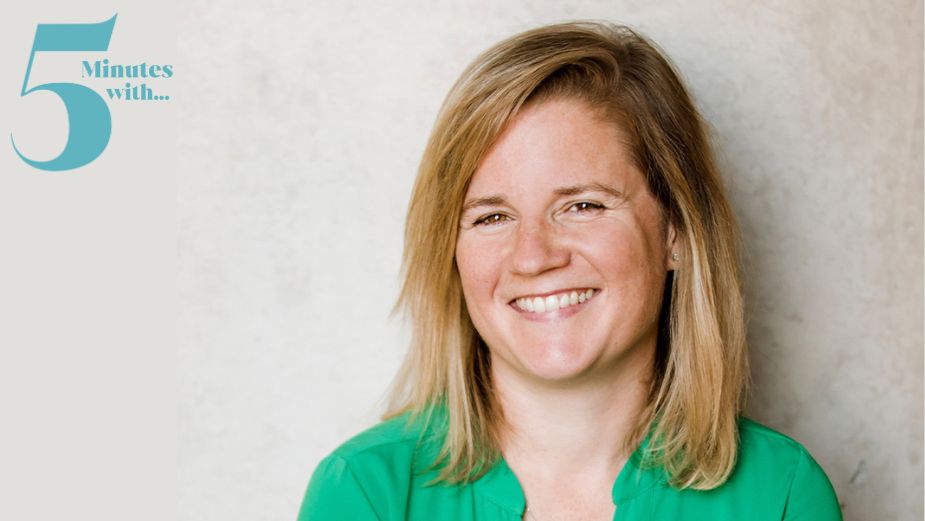
5 Minutes with… Kate Ross

Kate Ross co-founded the agency eight&four 16 years ago, when digital marketing was barely even a term. Since then everything has changed but also not that much, according to Kate. Mass fragmentation now defines the landscape though it’s not something that Kate is too stressed by as eight&four takes a strategic and refined approach to targeting audiences. Wanting to be ‘everywhere’ is a futile endeavour as that space is simply too big and broad while ignoring niche communities, like gaming, means missing vital consumer bases.
For an agency born right at the edge of the digital era, tech has always been part of the conversation. Today, it’s ever present as tech advancements enable and underpin so much and this year eight&four has pivoted to become a fully GenAI-enabled agency. With GenAI firmly with its foot in the doorstep too, Kate’s views on its applications are refreshingly pragmatic: it’s great for automotive content generation; it’s terrible at high-level copywriting. “I vehemently disagree with Sam Altman that 95% of tasks will eventually be replaced by AI,” Kate states with confidence.
We caught up with Kate to learn more about the agency’s proprietary GenAI tool, Coach, why its use within the agency will always be ‘led by talent’, and the continued need to balance long-termist and short-termist brand activity.
LBB> Kate, you co-founded eight&four with Amy McCulloch in 2008. What did the landscape of digital communication look like then and what made you want to start your own agency?
Kate> Digital marketing was in its absolute infancy and as a young person entering the industry I was immediately attracted to this new type of marketing. In the early days there was no social media for businesses, the job was predominantly based around web and email marketing, and I saw an opportunity very quickly to begin offering direct services to clients. Even though we were young and didn’t have a big black book and a stack of experience, we had knowledge as it was all new so we were one step ahead already.
LBB> 16 years later, how has that landscape, and the kind of challenges you’re helping clients solve, changed?
Kate> Everything has changed, and also it hasn’t. Obviously the digital and marketing landscapes have changed hugely thanks to mass fragmentation of the media landscape, and the way media is distributed and gets eyeballs is much more disconnected than it used to be. All that makes it much more complex to know how to leverage channels for different audiences and sectors. This uncertainty has created overwhelm and decision fatigue for a lot of people and it’s become harder to have clarity and confidence to know how to proceed, particularly when dealing with a complex set of departments and stakeholders.
But the fundamentals haven’t changed; we are still trying to help clients sell products and services. You do that with great storytelling and being coherent and consistent – the central values of what makes good marketing holds. I want to raise awareness about the need to get back to the original pillars of marketing and encourage people not to get so overwhelmed by data and fragmentation and instead get back to the core tenets of powerful storytelling around clear product/service offerings.
LBB> Fragmentation of social and content is here to stay – what are your predictions about how this is going to evolve? How is eight&four set up to deal with this fragmentation?
Kate> For us it’s about not adopting broad brush strategies. We think carefully about category and client-specific objectives, their current place in the market, whether they are incoming or the incumbent. It’s critical to tailor specific strategies for each client and think carefully about who you’re looking to engage with and where to go and find them, because they’re in very different places to where we were looking 15 years ago.
TV still remains the most powerful marketing medium but there are extraordinarily niche spaces now too, such as gaming. How are we interacting there for our clients where relevant? You can’t be everywhere as ‘everywhere’ is enormous now so you have to think carefully and navigate the fragmentation. Don’t be overwhelmed and spread yourself too thin but instead focus on a small set of objectives such as what you want to achieve and how you plan to do that. Remain curious, open minded, and ambitious.
LBB> Your company’s mantra is ‘led by talent, fuelled by technology’. Can you discuss what this means in practice?
Kate> We started in the digital era and so have always had a technical lean and foundation and that continues through to this day. Latterly, GenAI has been a core technology we’ve explored and implemented into our day to day working. But, as always, technology is the bedrock, which must be led by human talent. A hot topic now is how you balance human endeavour with technological advancements. ‘Led by talent’ means it’s human first: they are in charge and driving it forward, but they are armed and fuelled with the latest technology. I vehemently disagree with Sam Altman that 95% of tasks will eventually be replaced by AI – that’s simply not true. How humans use GenAI, like all tech, is imperative. GenAI is spiky and will affect some areas and parts of the industry more than others but its biggest threat to jobs is in those businesses that deliver average marketing comms, because that’s what it does really well. We’ve always been a highly strategic organisation, not a high volume/low quality model, so we’re better protected at this moment in time.
LBB> This year you pivoted to become a fully Gen AI-enabled agency at a time when many others in the industry are approaching with caution. Why are you so confident that AI is the future?
Kate> We don’t think it’s the solution to everything but see it as an important tool in modern marketing communications. I completely understand the reticence and caution around it but some of its applications are too powerful to ignore.
One of our clients is Genesis (Hyundai) and as automotive content generation is very expensive – getting vehicles to different locations logistically and so on – we built Coach, our GenAI image generator, which produces pixel perfect new content assets, trained on Genesis models. To insist on traditional photoshoots when Coach can generate the same assets for 20% of the cost – seems ridiculous. We can present perfect shots of cars anywhere - on the moon, in the desert, on a busy urban street – without leaving the office. Why ignore that? But there’s other areas in which we don’t see it as having a role, such as high-level copywriting.
AI produces repetitive and generic copy that is not fed by human experience. We do see benefits in translation (with human oversight) and let’s not forget we’ve been using AI for 30 years to correct digital spelling and grammar, but how we approach it is not one size fits all. For each client we look at the specific problem and where GenAI will be able to help build bespoke solutions to those problems. In short, it exists as a core part of our toolbox and we are fluent in it but we’re still very much a human-driven business.
LBB> With Platform12, you’re reimagining end-to-end content creation – why was this process ripe for reimagination and how are you doing it?
Kate> From a content creation perspective there’s different areas where it can support, especially in the product space where you can train it on things your client owns, opening up the ability to create new content for that client – as mentioned with our tool Coach, or with our copy tool Scholar. It is also incredibly helpful when it comes to things like content pipeline approval and so on. Humans create content but reducing the time and effort involved in admin heavy tasks that are complex and have a lot of stakeholders is particularly helpful.
We don’t believe it serves an end-to-end content creation process though - unless in a high diversity/mass asset scenario – say a large ecommerce campaign – it can support in asset generation in a complex multi-channel media buy.
LBB> Which of eight&four’s recent work best showcase your expertise and the kind of results you drive for your clients?
Kate> There’s a lot to choose from but recently I am very proud of the work we did to grow DHL’s eCommerce’s TikTok account to 1 million followers, making them the largest logistics company on the platform, overtaking the likes of Amazon. We completed a full audit of their current TikTok performance, focusing on trend lines and patterns for growth, engagement and visibility, as well as an in-depth audience analysis that sparked solutions for market splits and targeting, resulting in a paid approach that meant Project 1 Million was not only do-able, but was achieved five weeks ahead of the schedule.
Another one is our ongoing work as Screwfix’s social agency. Three key things we knew about their target audience was they are time poor in the day, they are experts in their craft, and rely on Screwfix to be a trusted partner, and they are fans of TV, sport and popular culture. So we were looking to deliver short-form proactive and reactive content around key cultural moments that conveyed engaging, quick, clear messages, with proactive and reactive content. Our in-house Culture Lab team was fundamental in identifying reactive moments and rapidly turning around social content to support them. These included the roof leak at Old Trafford, the announcement of the ‘Gavin and Stacey’ finale, an unexpected heatwave and new football stadium plans in Manchester.
LBB> Finally, what does the next 12 months look like for the agency?
Kate> We’ll be continuing to navigate this GenAI wave and what it means for the industry. We will be continuing to navigate an ever faster and reactive media environment and work out how we as marketers guide our clients to walk the line of cultural relevance whilst staying true to their brands. Long term values versus short term metrics will also continue to feature on the radar over the next year – we’re continuously defending long term strategic brand building for clients in the face of increasingly short-termist views of what performance on social should look like.












